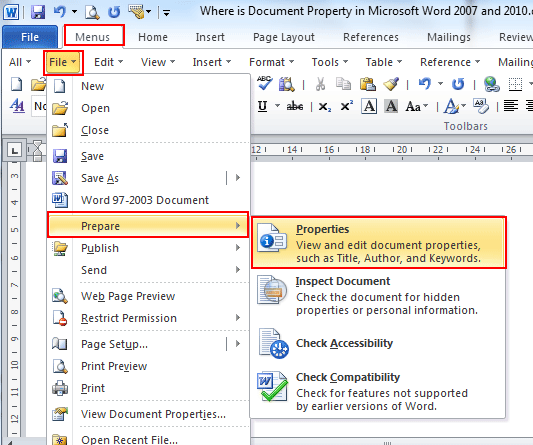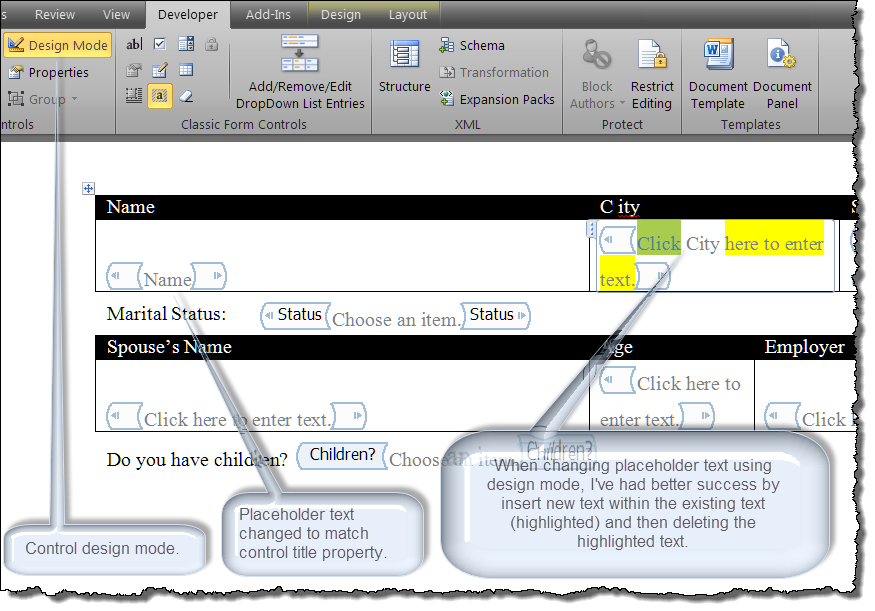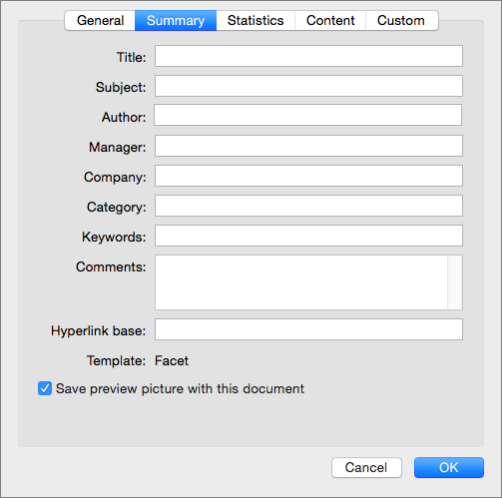
Fixing this problem would not be something that Microsoft could show off at demonstrations and isn’t cloud related so it’s a lower development priority. Gets or sets the keywords of the document. Gets the collection of custom properties of the document. But the same care wasn’t taken to making use of those properties. This connects the add-in's process to the Office host application's process. why are all the document properties in Excel to begin with? Our spies tell us that there was a Microsoft management edict to have the same interface for document properties in Word, Excel and PowerPoint so that was done by each development team. The custom functions above are just ‘wrappers’ that make the existing VBA feature available to the worksheet.
#Add title in document properties word 2016 code
You’d think with all those options in the worksheet structure they’d be accompanied by a function like say DocProperty() which insert or even change the properties within the worksheet, for example =DocProperty(“Title”) could insert the document title.Īs you can see from the VBA code above, the document properties are available in VBA so making them available in a regular Excel function would not seem a big ask. View document properties If you don't know where to find the information about your document in Excel 2016-2010, here are three ways to do it. There’s no direct way to use document properties in the worksheet! So when you want to add a file to the document library, you have to enter the values for any properties that are required, or correct any properties that are wrong. CustomDocumentProperties(Info_needed).Value Note that there’s no error checking, if you request a property that isn’t set or existing, an error is returned.įor custom properties you need a slightly different function such as: Private Function DocPropCustom(Info_needed As String) As VariantĭocPropCustom = ThisWorkbook.
#Add title in document properties word 2016 full
The full list of available properties is here – where you’ll also find details of the VBA property used. Use any of the regular document property names, including Use this formula to add a property to the worksheet: =docprop("Author") Private Function DocProp(Info_needed As String) As VariantĭocProp = ThisWorkbook.BuiltinDocumentProperties(Info_needed).Value We found this one here from ‘Jon-jon’, thanks. You can display the propertys value in the document by inserting a DOCPROPERTY field (Insert > Field, then select DocProperty in the field name list and choose the propertys name in the Field Properties list). In Excel, the only way to add document properties into a worksheet is via a custom function. It also wont enable you to insert a content control in the document to display the value of the property. Go to File | Info in Excel 2013 (Prepare | Properties in Excel 2007) and all the properties are there including a document panel, advanced and custom properties, same as in Word. You can add and edit document properties in worksheets much the same as in Word documents.

We also complained about the poor support for properties in Excel. When updated, the field returns the value assigned to the MyVar document variable.We’ve already told you about document properties and how useful they are in Word. You can, however, insert the contents of a document variable directly within a document by using the DOCVARIABLE field, as follows: Typically, users would never see the contents of a document variable they are intended primarily for use within macros. Word’s built-in Clip Art Gallery contains dozens of images that act as lines. If you need to remove one, simply Backspace or Delete as normal. On a blank line, type these 3 characters in a row and press ENTER. For instance, the following macro line will create a variable called MyVar and assign it a value of 27:Ī Name:="MyVar", Value:=27Īt a later time, you can access the value associated with the variable by using the variable's name, as follows:ĭefaultToUse = ActiveDocument.Variables("MyVar") Use Auto Format to Insert a Line in Word. All you need to do is provide the name for the variable and the value you want assigned to the variable. You'd have to save the file, close & re-open to see the result.

To create a document variable within a macro, you use the Add method with the Variables collection. You can also have Acrobat show the PDF's title in the file's Tab (instead of the file's name) by going to File>Properties, click on the Initial View tab, and changing the Show option to Document Title. These defaults can be stored within document variables. For instance, you may want your macro to remember the defaults that it uses when prompting the user.

Document variables are typically used to maintain some sort of information from one invocation of a macro to the next. Visual Basic for Applications allows you to create persistent variables that are associated with a document.


 0 kommentar(er)
0 kommentar(er)
